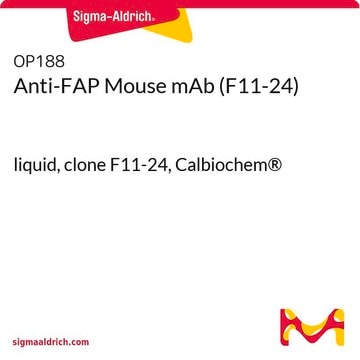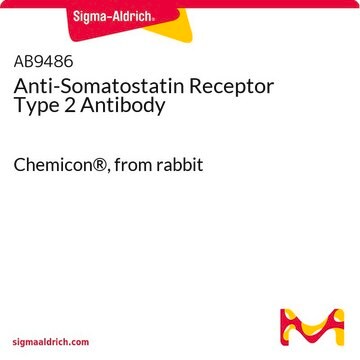MABC1145
Anti-FAP Antibody, clone 73.3
clone 73.3, from mouse
Synonym(s):
Fibroblast activation protein, Propyl endopeptidase FAP, Dipeptidyl peptidase FAP, Serine integral membrane protease, SIMP
About This Item
Recommended Products
biological source
mouse
Quality Level
antibody form
purified immunoglobulin
antibody product type
primary antibodies
clone
73.3, monoclonal
species reactivity
mouse
technique(s)
flow cytometry: suitable
isotype
IgG1κ
NCBI accession no.
UniProt accession no.
shipped in
ambient
target post-translational modification
unmodified
Gene Information
mouse ... Fap(14089)
General description
Specificity
Immunogen
Application
Flow Cytometry Analysis: 1 µg/mL from a representative lot detected FAP in 3T3/FAP overexpressed cells, but not in 3T3 WT cells. (Courtesy of Leslie Hopper, University of Pennsylvania, USA).
Apoptosis & Cancer
Quality
Isotyping Analysis: The identity of this monoclonal antibody is confirmed by isotyping test to be mouse IgG1 .
Target description
Physical form
Storage and Stability
Other Notes
Disclaimer
Not finding the right product?
Try our Product Selector Tool.
Storage Class Code
12 - Non Combustible Liquids
WGK
WGK 1
Certificates of Analysis (COA)
Search for Certificates of Analysis (COA) by entering the products Lot/Batch Number. Lot and Batch Numbers can be found on a product’s label following the words ‘Lot’ or ‘Batch’.
Already Own This Product?
Find documentation for the products that you have recently purchased in the Document Library.
Our team of scientists has experience in all areas of research including Life Science, Material Science, Chemical Synthesis, Chromatography, Analytical and many others.
Contact Technical Service







